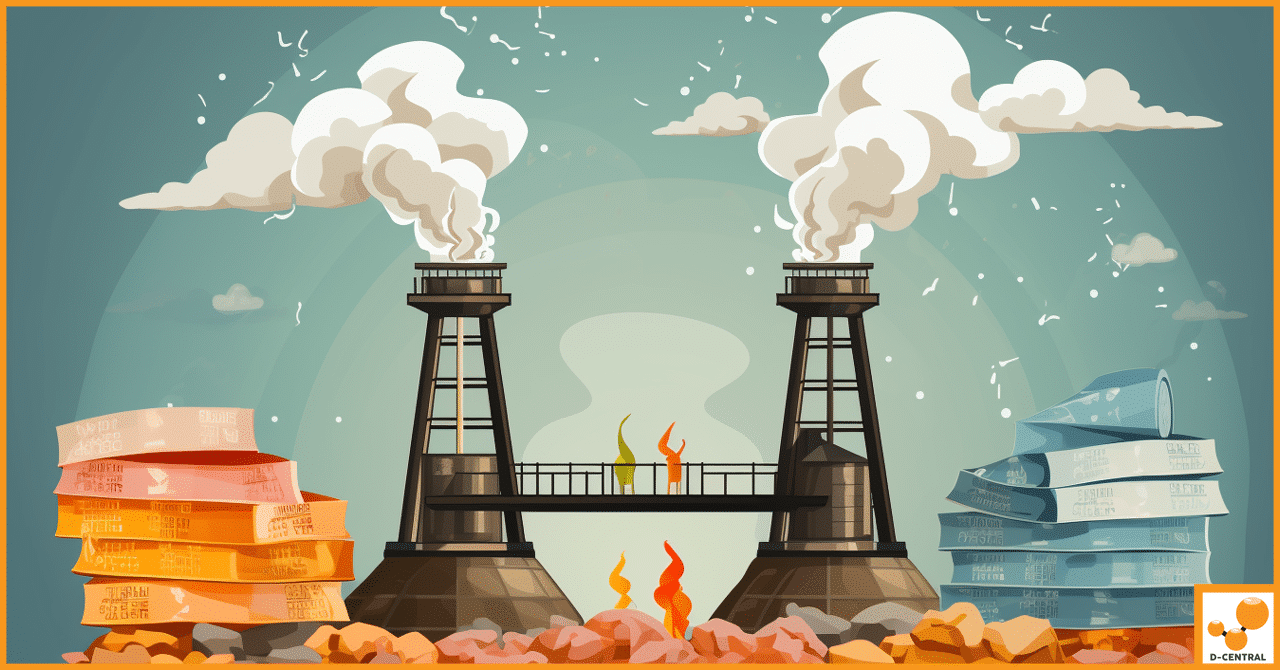
Bitcoin and Nuclear Power: A Controversial but Potentially Sustainable Solution
Bitcoin has become the most popular cryptocurrency in the world, but like many modern solutions to our problems, it comes
4479 Desserte Nord Autoroute 440, Laval, QC H7P 6E2

Are you banging your head on the table to understand Bitmain’s Antminer 19th Series? If so, you’ve probably encountered the Antminer S19al, the S19j L or the Antmine S19 XP. The Antminer S19al, S19j L, and S19 XP models garnered massive attention due to their high hashrate, low power consumption, and affordability. However, these models have differences that make one more suitable than the other, depending on the miner’s needs. If you are struggling to understand the distinctions between these models and are unsure of which one to purchase, this blog post is for you. We will delve into the differences between these models to help you decide when buying a Bitmain Antminer 19th Series miner.
The aluminum substrate version of the Bitmain Antminer 19th Series mining machines is more thermally conductive than the PCB version. This is because aluminum substrates have a higher thermal conductivity rating than copper-based substrates, allowing them to dissipate heat more quickly and efficiently while preventing damage from overheating. Additionally, aluminum substrates are less expensive than copper-based substrates, making them an attractive option for miners looking for affordability.
Another benefit of opting for an aluminum substrate version over a PCB version is its increased dimensional stability when exposed to high temperatures. Dimensional instability can cause damage or affect performance, so having a machine with better dimensional stability is essential for any miner. Aluminum substrates offer adequate design flexibility with increased thermal conductivity and dimensional stability capabilities.
Finally, PCBs are known to provide better electrical insulation compared to aluminum substrates. Therefore, if electrical insulation is a critical factor in your mining operation, the PCB version may be a more suitable option despite its lower thermal conductivity and cost.
Using an aluminum substrate for mining machines has several advantages over other materials, such as printed circuit boards (PCBs). Here are some of the key benefits of using an aluminum substrate for mining machines:
Using an aluminum substrate for mining machines offers several advantages over other materials, such as higher thermal conductivity, lower cost, dimensional stability, design flexibility, and good electrical insulation. These benefits clarify why many people use an aluminum substrate for their mining machines rather than relying on other materials such as PCBs.
Regarding cryptocurrency mining machines, the Antminer S19al and the Antminer S19j L are two of the most popular options from the Bitmain Antminer 19th Series. Both models use the SHA-256 algorithm to mine Bitcoin and other cryptocurrencies, have a power consumption of 3250W and can be purchased from various online retailers. However, some differences between them must be considered when deciding which is best suited to your needs. Here is a comparison between the two models:
When deciding which model to purchase, it is essential to consider these factors. If you need a mining machine with a higher hashrate and don’t mind paying a premium price, then the Antminer S19al might be the better option. However, if you have a limited budget and don’t require the highest hashrate, the Antminer S19j L may better fit your needs. Additionally, consider which features are essential to you, such as electrical insulation, design flexibility, and thermal conductivity. The aluminum substrate version of the Antminer S19al has higher values than its PCB counterpart, which might be an essential consideration for some miners. Finally, consider the release date of each model. While they both use similar technologies, the S19j L was released later, so it might have more recent updates that could benefit miners. By considering all these things and weighing them against your needs and budget, you can decide which model is best for you.
The recent swap to an aluminum-backed single-sided PCB in Bitmain’s ASIC mining machines has been criticized due to its tendency to increase ASIC failure and under-hashing. These issues are primarily caused by poor heat transfer due to the aluminum material and crowding of components onto one layer of PCB.
The swap to an aluminum-backed single-sided PCB in Bitmain’s ASIC mining machines has some potential drawbacks, including increased ASIC failure and under-hashing due to poor heat transfer and component crowding. However, miners can take steps to mitigate these issues, such as using third-party firmware, optimizing environmental conditions, or installing additional cooling measures. By taking these steps, miners can maintain optimal performance while reducing maintenance costs and avoiding device failure.
The higher thermal conductivity of the aluminum substrate means that miners may need to purchase additional equipment or spend more on energy costs to maintain the ideal temperature for their machines. Without proper cooling measures and close monitoring of temperatures, components on the board face a much higher risk of overheating and subsequent damage, resulting in costly repair or replacement bills.
In addition to increased maintenance costs, the increased heat transfer due to the aluminum material can also lead to reduced efficiency or even device failure when left unchecked. High temperatures can cause components such as transistors and capacitors to deteriorate faster than they would otherwise, reducing the lifespan of the machine and leading to underperformance. Miners need to take into consideration this potential consequence before making the switch from double-sided boards with non-aluminum substrates.
Overall, it is clear that the introduction of Bitmain’s aluminum-backed single-sided PCB has led to an increase in miners’ maintenance costs and potential reductions in performance due to increased heat transfer. Miners need to carefully weigh these factors against any potential benefits before investing in such technology; however, if done correctly with adequate cooling measures in place and proper monitoring of temperatures, such technology can still offer great rewards for those willing to invest their time and resources into it.
Bitmain’s aluminum-backed single-sided PCB in their ASIC mining machines has advantages and disadvantages. Although it can potentially reduce production costs due to lower material costs, it can also increase ASIC failure and under-hashing, maintenance costs, and reduce efficiency or cause device failure due to increased heat transfer. Therefore, miners should carefully consider the implications of switching from double-sided boards with non-aluminum substrates and take necessary steps to ensure their machines are operating efficiently and avoid device failure. These steps may include using third-party firmware, optimizing environmental conditions, or installing additional cooling measures. Overall, miners must weigh this new design’s potential benefits and drawbacks and take precautions to reduce maintenance costs and maintain optimal performance while avoiding unnecessary costs.
What are the differences between the aluminum substrate version and the PCB version of the Bitmain Antminer 19th Series?
The aluminum substrate version of the Bitmain Antminer 19th Series mining machines has higher thermal conductivity and increased dimensional stability compared to the PCB version. However, PCBs provide better electrical insulation. Miners should consider their specific needs when choosing between the two versions.
What are the advantages of using an aluminum substrate for mining machines?
Using an aluminum substrate for mining machines offers benefits such as higher thermal conductivity, lower cost, dimensional stability, design flexibility, and adequate electrical insulation.
What is the difference between the Antminer S19al and the Antminer S19j L models?
The Antminer S19al has a higher hashrate of 110Th/s compared to the Antminer S19j L’s hashrate of 100Th/s. The Antminer S19al is also more expensive and was released earlier than the Antminer S19j L. Miners should consider their budget and hashrate requirements when choosing between the two models.
What are the issues with the swap to an aluminum-backed single-sided PCB in Bitmain’s ASIC mining machines?
The swap to an aluminum-backed single-sided PCB has led to increased ASIC failure and under-hashing due to poor heat transfer and component crowding. This can result in reduced efficiency, increased maintenance costs, and even device failure.
What is the impact on miners’ maintenance costs and ASIC performance?
Miners may experience higher maintenance costs due to the need for additional cooling measures to manage the increased heat transfer of the aluminum substrates. Without proper cooling, there is an increased risk of component damage and reduced efficiency. Miners need to carefully consider these factors and take appropriate measures to optimize performance and minimize maintenance costs.
DISCLAIMER: D-Central Technologies and its associated content, including this blog, do not serve as financial advisors or official investment advisors. The insights and opinions shared here or by any guests featured in our content are provided purely for informational and educational purposes. Such communications should not be interpreted as financial, investment, legal, tax, or any form of specific advice. We are committed to advancing the knowledge and understanding of Bitcoin and its potential impact on society. However, we urge our community to proceed with caution and informed judgment in all related endeavors.
Related Posts

Bitcoin has become the most popular cryptocurrency in the world, but like many modern solutions to our problems, it comes

As cryptocurrency mining continues to grow, so does the need for robust fire safety measures. ASIC miners, while powerful and

Canada, a country rich in natural resources, stands as one of the world’s leading energy producers. This distinction, however, is